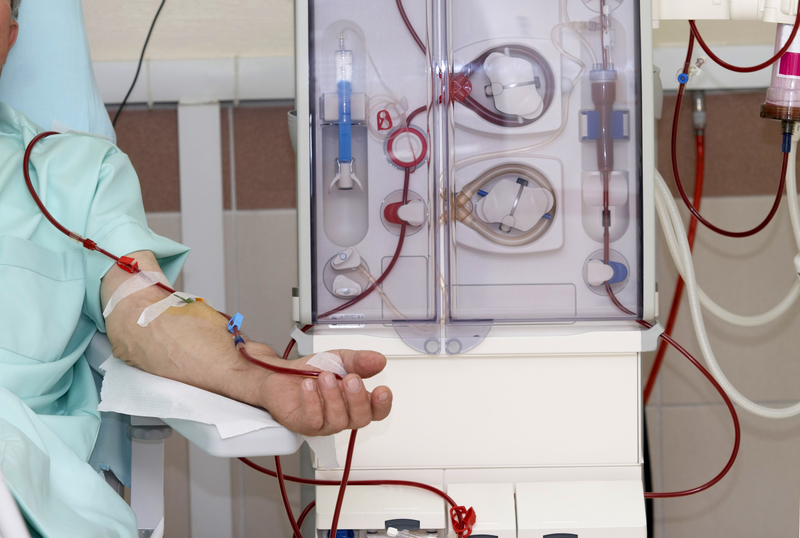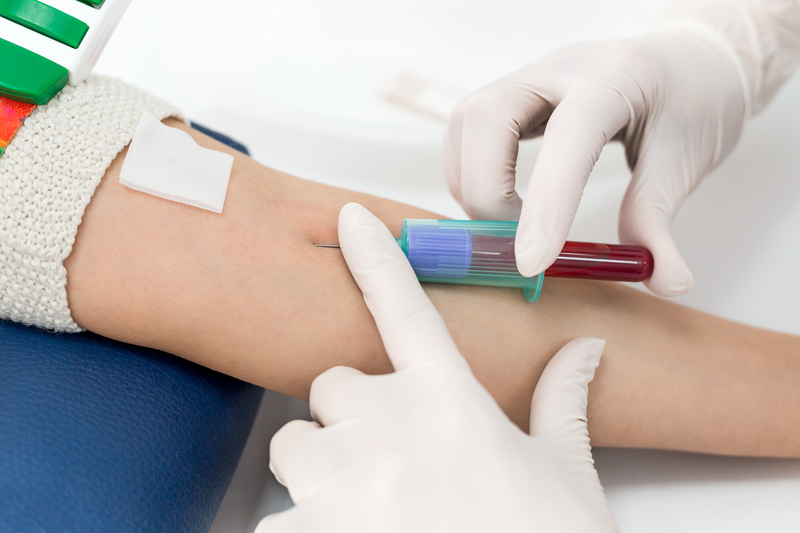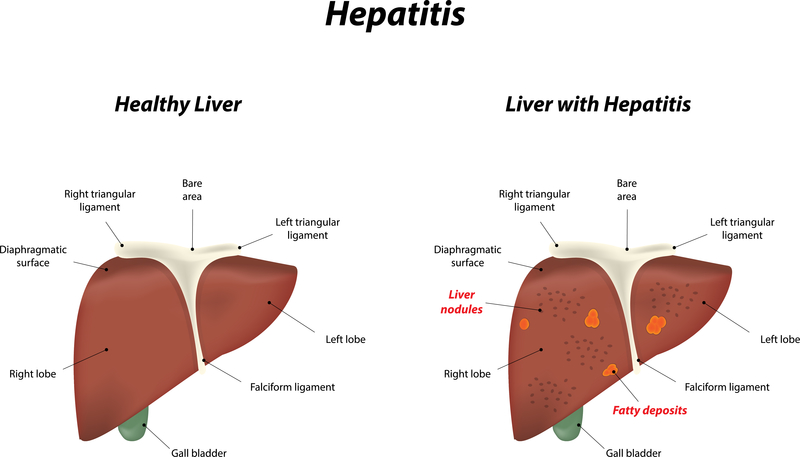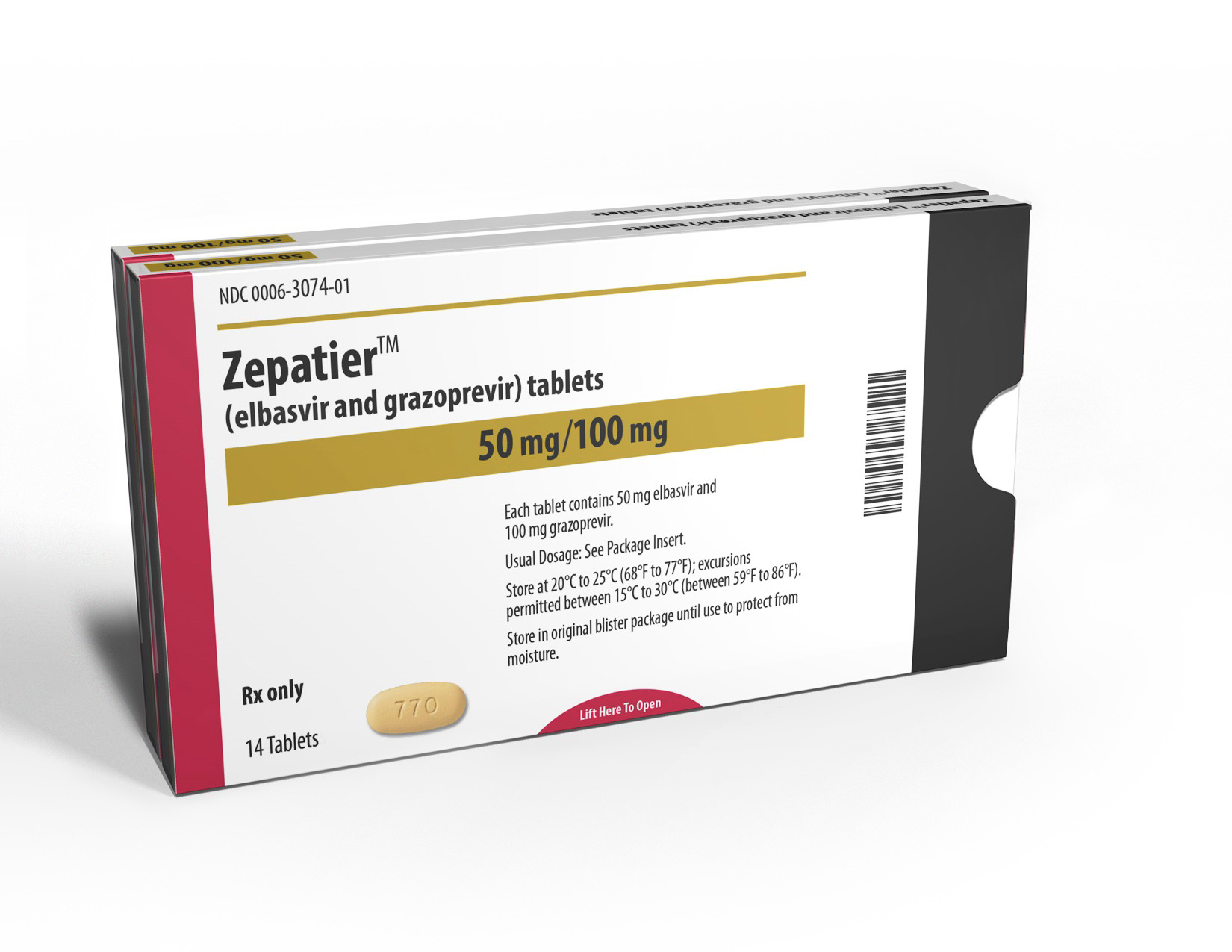How You Could Contract Hepatitis C And What You Should Do Immediately
Hepatitis C is an infection of the liver caused by the hepatitis C virus. It affects approximately 3.5 million people in the United States alone, and many people are unaware of its symptoms. Although there are many forms of the hepatitis C virus, type one is the most common form in the United States. Hepatitis C is contracted by coming in contact with the blood or bodily fluid of someone who has the disease. Long term effects may include liver cancer. Here is what to do when symptoms present themselves.
10. Types Of Hepatitis C

Hepatitis C, or hep C, is a contagious viral infection that causes inflammation of the liver. The condition ranges in severity and can last for a few weeks, or it can turn into a chronic illness that attacks the liver. Acute hepatitis C is a short-term infection that develops within six months of exposure to an infected person. Chronic hepatitis C is a long-term illness that remains inside a person’s body and can result in liver damage, cancer, and cirrhosis (scarring of the liver tissue).
9. How Common Is it?

There were an estimated thirty thousand five hundred cases of acute hepatitis C viral infections reported in the United States in 2014. Chronic hepatitis C affects an estimated 2.7 to 3.9 million people in the United States alone. Of all acute hepatitis C cases, up to as many as eighty-five percent will develop a chronic infection that increases the risk of frequent infections, liver damage, cirrhosis of the liver and even liver cancer.
8. How Is It Spread?

Hepatitis C is contracted by coming in contact with the blood or bodily fluids of an infected person. It can be spread by sharing needles or drugs with an infected person, having sexual intercourse with someone who has a sexually transmitted disease, HIV, or is a carrier of hepatitis C, and from birth when an infected mother passes it to her child. The Center for Disease Control and Prevention recommends getting tested immediately if any of these situations are a concern.
7. Risk Factors

People who are at an increased risk of hepatitis C include current and past drug injection users, recipients of donated blood, organs and blood products before the year of 1987, people who have spent many years on dialysis for kidney failure, people who have gotten tattoos with non-sterile instruments, health care workers injured by needles, people with HIV infections and children who are born to parents with the virus. Less common risks include having sexual contact or sharing person items such as razors or a toothbrush with an infected person.
6. Symptoms

According to the Center for Disease Control and Prevention, up to eighty percent of people with acute hepatitis C do not experience any symptoms. The only way to determine if hepatitis C is present is through blood testing done by a medical professional. In some cases, symptoms can range from mild to severe, including fatigue, fever, loss of appetites, vomiting and nausea, dark urine, abdominal pain, joint pain, bowel movements that are clay-colored, and yellowing skin or eyes (jaundice).
5. Treatments Options

Treatment will depend on the type of hepatitis C virus present. Most people in the United States have genotype one, followed by genotypes two and three with fewer occurrences of genotypes four, five and six. A medical doctor can determine which treatment is right. The Center for Disease Control and Prevention states that approximately fifteen to twenty-five percent of people with the hepatitis C virus will clear it from their bodies on their own without treatment, although researchers do not fully understand how.
4. Most Effective Treatments

Treatment for hepatitis C has changed over the years. The Federal Drug Administration (FDA) approved a once-daily pill in February of 2016 that combines the drugs elbasvir and grazoprevir. The drug has been shown to cure the virus in almost one hundred percent of people who are treated with it. Other drugs include a once-daily treatment pill that combines the drugs sofosbuvir and ledipasvir, which has been shown to cure the disease in most people within eight to twelve weeks of treatment. The most commonly reported side effects of these drugs were headaches and fatigue.
3. Diagnosis

Diagnosis of hepatitis C requires a blood test known as a hepatitis C antibody screen or anti-HCV. In most cases, the blood drawn will need to be sent out to a laboratory where it can be tested. There is a rapid test that is approved by the Federal Drug Administration that is able to provide results in twenty minutes. A negative test indicates there is no hepatitis infection or exposure. Although a positive test indicates there is hepatitis exposure, it does not mean there is an infection. Viruses can live in the body for years before symptoms or infections occur.
2. Prevention

Although there are vaccinations available to treat other forms of hepatitis such as A and B, there is no current vaccination to prevent hepatitis C. To avoid contracting the virus, experts recommend using a latex condom during sex. Take care when getting tattoos, body piercings, or receiving pedicures and manicures as any non-sterile equipment may increase the risk. As smoking, diabetes, and obesity may contribute to liver scarring, it is best to avoid smoking tobacco and drinking alcohol, maintain an ideal weight, and avoid taking certain medications.
1. Natural Treatment

Along with taking proper preventive measures, supplementing the diet with foods that boost the immune system and promote liver health may help a person with hepatitis stay healthy. The following antiviral herbs may help; elderberry, Calendula, Echinacea, garlic, astragalus root, cat’s claw, licorice root, ginger, oregano, and olive leaf. Research shows that some antiviral herbs are more potent than some antibiotics at fighting infection. Antiviral herbs can be enjoyed as a tea with raw honey or by adding them to dishes.
